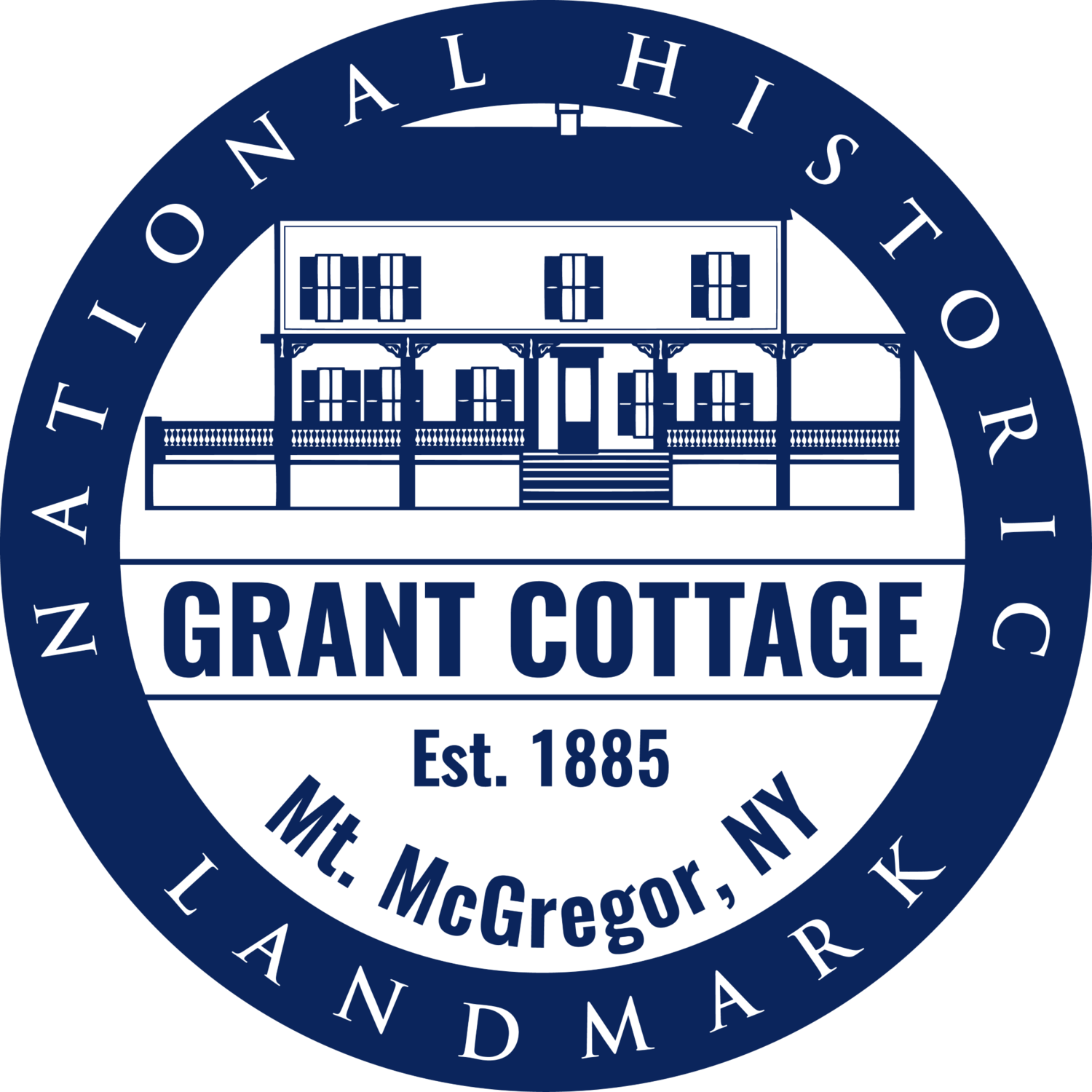All the Nation Mourned
by Ben Kemp, Site Coordinator
Shortly after the ailing General Grant arrived on Mt. Mcgregor in the summer of 1885, he wrote his son Fred a note that was to prove both an understatement and a guide for his family in choosing his final resting place:
“It is possible my funeral may become one of public demonstration, in which event I have no particular choice of burial place; but there is one thing I would wish you and the family to insist upon and that is that wherever my tomb may be, a place shall be reserved for your mother.”
Grant passed away surrounded by his family on July 23. After careful consideration, the family chose Riverside Park on the upper West Side of Manhattan as the location for his final resting place. A temporary brick tomb was quickly constructed as funeral plans were left in the hands of General Winfield Scott Hancock.
A memorial service was held on Mt. McGregor on August 4. The trains up the mountain were filled to the max bringing visitors to the service. As a large crowd gathered in front of the cottage, fellow Civil War Generals William T. Sherman and Rufus Ingalls took their places on the porch. After the service, with cannons booming in tribute on the nearby overlook, the remains were taken by funeral train to Albany to lie in state in the State Capitol. The next day they moved on to New York City where an estimated 250,000 mourners filed past to pay their respects as the General lay in state in City Hall. The mourners represented every level of society from the laborer to the social elite.
On August 8, 1885, as the day dawned on New York City, a massive crowd of mourners gathered to say farewell to their hero. An estimated 1,500,000 people descended on Manhattan, the largest event ever staged in the history of the city.
At 8:30 a.m. General Hancock took charge at City Hall. Grant’s casket was transferred to a funeral carriage drawn by 24 black stallions. Some 60,000 military personnel and a host of statesmen in carriages, including President Cleveland, were all part of a funeral procession that stretched over five miles down Broadway. Some 18,000 veterans joined their former commander on one final march. Grant’s nine-year-old granddaughter Julia later recalled the emotion expressed, “Every face was sad and some of them were weeping.”
The New York Tribune described the immense scene. “Such a mighty outpouring of people in the streets, such a marshalling of men in one array the inhabitants of New-York never saw.” A spectator gave another account of the impressive spectacle. “Broadway moved like a river, a river into which many tributaries poured. There was one living mass choking the thoroughfare…pavements, windows, curbs, balcony and housetop teeming. All walls and doorways were a sweep of black.”
Grant was truly a man of the people. His simple unassuming manner and approachability endeared him to a wide range of Americans. This was not an arrogant, pompous, rich celebrity, but a man who had done his duty to his country selflessly, endured hardship and never considered himself better than anyone else. The New York Times illustrated the point:
“The outward manifestations of common sorrow are by no means confined to the costly decorations of the houses of the rich and to the abundance of material festooned and draped with all the care. In the narrow streets and the tall crowded buildings where the poor make their homes the sign of grief is on nearly every door post. In many cases it is nothing but a narrow strip of cheap black cambric fluttering in the breeze from the topmost story of some tenement house or a small flag bordered with a piece of folded crepe from a wornout bonnet.”
The mourning was certainly not confined to New York City. Communities throughout the U.S. held funeral processions and memorial services to honor the great soldier and statesman. The man many had never met had nonetheless touched all their lives and become woven into the fabric of the nation and people he dedicated his life to. An early Mark Twain biographer commented that upon Grant’s passing, “It can truly be said that all the nation mourned.”
The funeral procession finally came to Riverside Park by early afternoon. As it arrived, the gunboats in the Hudson River commenced a thundering cannonade in tribute. At 4:30 p.m. the pallbearers placed Grant’s remains in the temporary tomb, and after a simple service, a solitary bugler played taps at the door of the tomb. It was the end of the extraordinary life of a simple man whose solid character had helped save a nation.
The memory of Grant would linger in the hearts of Americans, especially the veterans of the war and many more memorials were erected in his honor in the following years. General Grant National Memorial or “Grant’s Tomb” was completed in Riverside Park in 1897, and for years was New York’s top tourist destination drawing as many as 500,000 visitors annually. Perhaps President Benjamin Harrison put it best when he visited Mt. McGregor in 1891 and after touring the final home of his former commander considered his legacy. “It is stated that a great life went out here; but great lives, like that of General Grant, do not go out, they go on.”






